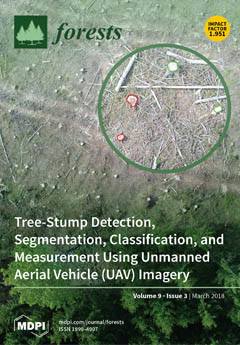Open AccessArticle
Factors Affecting Natural Regeneration of Tropical Forests across a Precipitation Gradient in Myanmar
by
Inkyin Khaine, Su Young Woo, MyeongJa Kwak, Seong Han Lee, Sun Mi Je, Hana You, Taeyoon Lee, Jihwi Jang, Hyun Kyung Lee, Hyo Cheng Cheng, Jeong Ho Park, Euddeum Lee, Yang Li, Haenaem Kim, Jong Kyu Lee and Jieun Kim
Cited by 28 | Viewed by 9164
Abstract
Natural regeneration is an essential component of forest dynamics and the recovery of ecosystem functions. Therefore, understanding regeneration status, and how abiotic and biotic factors affect it, is important for ecological studies. This study discovered different regeneration statuses of tropical forests in response
[...] Read more.
Natural regeneration is an essential component of forest dynamics and the recovery of ecosystem functions. Therefore, understanding regeneration status, and how abiotic and biotic factors affect it, is important for ecological studies. This study discovered different regeneration statuses of tropical forests in response to differences in rainfall in Myanmar, and the environmental and overstory factors that had the most influence on understory regeneration. Study sites were set up in regions with 625 to 2035 mm of annual rainfall, and ecological characteristics were measured. According to the results, natural regeneration increased with rainfall, showing a good regeneration status at all sites. Forests within a range of 1411–2035 mm of annual rainfall had a significantly higher density and species diversity at specific natural regeneration stages than those with 625–1029 mm. Not only abiotic but also overstory structure affected the natural regeneration of forests. However, not all factors influenced natural regeneration status. Overstory size distribution parameters did not show a significant influence on natural regeneration. Average annual rainfall (abiotic), as well as ecosystem complexity, density, species richness, and diversity (overstory), were found to be the most influential factors for the density and diversity of natural regeneration. The results of this study will support silviculture and the management of tropical forests.
Full article
►▼
Show Figures





